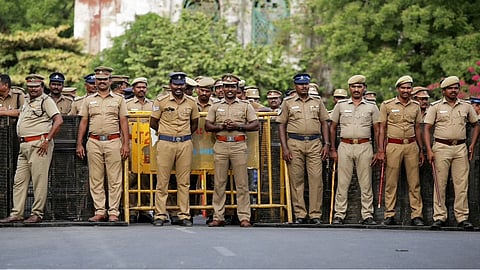

Last month, Tamil Nadu’s police personnel were put on high alert after the DGP instructed all district superintendents and commissioners to pursue those helming drug cartels in their respective districts. The alert was issued after the arrest of a Nigerian woman in Kanathur, Tambaram, where she was held for the possession of 70 small packets of cocaine worth Rs 5.75 lakh. While the quantum of seizure might appear small, the police hoped to glean some intel on the transport route employed by the traffickers.
In the same month, an Iranian dhow transporting around 200 kg of heroin, was seized by the Narcotics Control Bureau with the help of the coastal police and the Indian Navy off the Kochi coast. The contraband was being moved to Kerala via Afghanistan and an international cartel was said to be behind the operation. Similarly, one individual was arrested in Mumbai by officials of the Directorate of Revenue Intelligence (DRI) in October in connection with a seizure of drugs. This time the amount totalled 198 kg methamphetamine as well as 9 kg cocaine, the worth of which was estimated to be Rs 1,476 crore.
The action within Tamil Nadu has also intensified as in August, the Chennai Air Customs had busted a drug consignment of heroin and cocaine weighing 9.5 kg which was valued at Rs 100 crore. This was preceded by a haul in May that unearthed heroin worth Rs 1,500 cr from two fishing boats registered in Tamil Nadu, caught off the coast of Lakshadweep. The string of seizures in Indian ports of entry was prompted by an astonishing bust in September 2021 at Gujarat’s Mundra Port, run by the Adani Group. A whopping 3,000 kg of heroin was recovered from two containers, valued at Rs 20,000 crore.
A report published by the UN Office on Drugs and Crime and India’s Ministry of Social Justice, in 2004, said as many as 8.75 mn people in India use cannabis, while 2 mn are known to use opiates, while 0.6 mn use sedatives or hypnotics. Apart from flooding the market with high value contraband, the accused, especially in the Mundra case, had links with banned terror outfits based out of Pakistan. The drugs had been smuggled into India with the help of non-State actors who used the earnings to channel it back to such groups and carry out operations against India.
India has a broad legislative policy laid out in the three Central Acts — Drugs and Cosmetics Act, 1940, Narcotic Drugs and Psychotropic Substances Act, 1985, and Prevention of Illicit Traffic in Narcotic Drugs and Psychotropic Substances Act, 1988. As per the Home Ministry, the Narcotics Control Bureau has been instrumental in the war against drugs, and the numbers are indicative of this. The value of drugs confiscated between 2014 and 2022 is almost 25 times more than that of the previous eight years. However, there is scope for improvement.
Coordination among enforcement agencies needs to be strengthened. Sharing information between State and Central agencies is also a concern as many such bodies work in isolation. Budgets for enforcement agencies need to be beefed up to help them track cartels to the point of origin. The State’s Drug Free Tamil Nadu programme, initiated by the CM is a model that can be adopted by other States. We also need to remove the taboo around rehab centres as a reformative approach will be necessary to help those affected readjust with society in the long run.
Visit news.dtnext.in to explore our interactive epaper!
Download the DT Next app for more exciting features!
Click here for iOS
Click here for Android